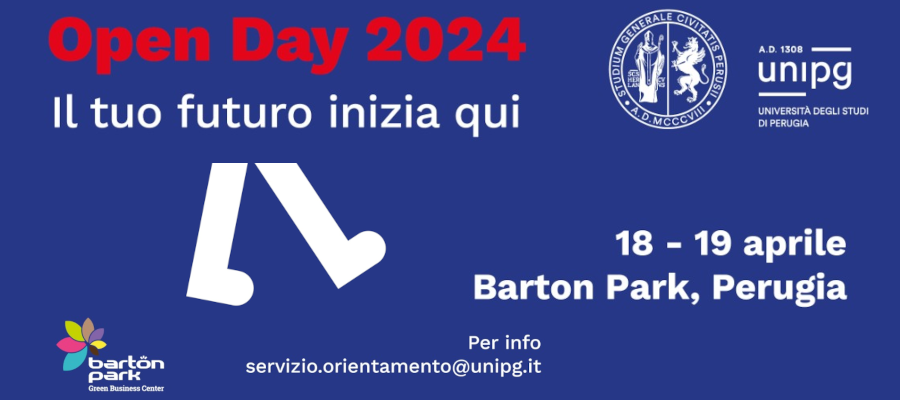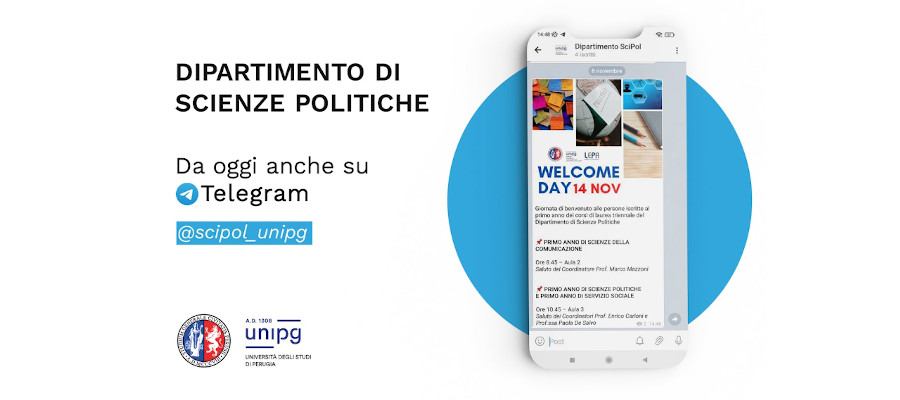Abstracts
Foreign Literature as Poison: the Translation of German Popular Fiction in Italy during the 1930s
Natascia Barrale, Università di Palermo
Between the end of the 1920s and the first half of the 1930s, Italian translation of foreign contemporary novels was encouraged by small and big publishers, together with a new audience, larger and more heterogeneous than before the experience of the war. However, the sharp rise in the number of imported novels soon faced disapproval as, according to local authors, translations represented a form of unfair competition. In a context of strong nationalism and imposed cultural autocracy, translation was considered as a polluting, anti-patriotic and servile practice. Censorship mostly acted through a silent compromise between the publishers and the regime, rather than by institutional repressive actions. In order to protect themselves from state sanctions and requisitions publishers and translators often deleted every potentially unpleasant element from the texts, affecting topics like abortion, incest, suicide, pacifism, sexuality, women’s emancipation, communism, or episodes belittling Italy. The analysis of a corpus of German popular fiction translated into Italian suggests that while "high literature" was either translated rather literally or not, popular literature was translated but with a high degree of interventions, and this happened, first of all, exactly because of the low cultural status ascribed to this type of literature as well as because of the modernity of the theses it contained. The extreme capillarity of circulation of popular literature made its messages even more accessible to the audience and thence more dangerous – and more censored – than "high literature", which catered to a narrower niche of readers.
Dangerous Visions? – The Circulation and Translation of Women’s Crime Fiction and Science Fiction
Diana Bianchi, Università di Perugia
Although a number of women have been involved in the development of popular genres, the representation of women in them has been mostly traditional. Science fiction was for a long time mainly written by male authors for male readers, and the few women who produced SF narratives usually worked under a pseudonym. The SF hero was traditionally male, women tended to have marginal and conventional roles or were represented as “other”, their difference embodied within the figure of the alien. Crime fiction has a less monolithic history. As a matter of fact, in the 1920s a few female writers of crime fiction became extremely popular, although the hero of their novels was usually a male detective. However, in later decades, and with the development of the American hard-boiled, crime fiction was returned to its original ‘masculine’ territory. In the 1960s and especially in the 1970s a number of women writers of science fiction and crime fiction appropriated these popular forms, subverting their conventional elements and introducing heroines and themes that had a strong feminist and women oriented character in these ‘masculine’ narratives. In this paper I discuss whether the transfer of these 'innovations', which were clearly successful in the source culture, was resisted into other cultural contexts, especially in places where women’s role in society continued to be perceived as a traditional one. In particular, I will look at the reception and translation of ‘feminist’/women oriented science fiction and crime fiction into Italian.
Dracula’s Italian Hosts
Antonio Bibbò, University of Manchester
This paper looks at two Italian translations of Bram Stoker's Dracula as two exemplary and rather antithetical ways of sidestepping either official or tacit norms in the literary field, and introducing supernatural themes in Italy during the first half of the twentieth century. It considers how such censorious attitudes can stimulate unorthodox readings that can ultimately be paradoxically “productive” and grant some books a more varied, although quantitatively poorer, readership, through different and often contradictory re-framing practices. The first two Italian translations appear in crucial years in Italian history: 1922 and 1945, i.e. the start of the fascist regime and the year of its final demise, and were strikingly different. The first edition, clearly based on an abridged French 1920 edition, is far shorter than Stoker’s novel. It highlights the novel’s shocking features and domesticates its unsettling character by focusing on the more ghastly elements and through a systematic removal of all the political and socio-anthropological references that had made the myth of Dracula so compelling since the publication of the novel. The publisher and editor of the 1945 edition adopted an even more surprising reframing strategy, as they tried to ennoble the novel in order to contrast the rationalizing and censorious attitude that surrounded fantastic literature in Italy and insisted on its philosophical and mystical import. Such an original reading of the novel is testimony both to a process of restructuration of the Italian literary field after fascism and to the malleable nature of popular literature.
Gomorrah: from Novel to TV series
Giuseppina Bonerba, University of Perugia
Roberto Saviano’s famous novel, Gomorrah (2006), which deals with the inner dynamics within the “camorra” territory and has been translated into 52 languages, has been the object of two adaptations, into a film (2008) and into a TV series (2014). Both were acclaimed by critics and viewers, in Italy and abroad. The transformation of a novel into a film is an instance of intersemiotic translation and involves the interpretation of a verbal text by way of non-verbal signs. This leads to the production of a new text which is the result of a series of choices, regarding both the content (what should be retained and what should be omitted) and the expressive possibilities of the target medium. Umberto Eco (2003) highlights how every translation is an interpretation of a source text whose aim is to identify those elements which seem important for the best rendition of the source text’s meaning. Eco also states that, in addition to maintaining the meaning of the original text a good translation should also enrich it. Gomorrah represents an excellent subject to study the process of intersemiotic translation because in addition to the afore mentioned success, Roberto Saviano himself wrote the script for the film and the TV series. This paper examines the translation of the novel into the film and the TV series, highlighting the author’s choices, analyzing the elements from the novel which have been heightened and those that have been modified or left out in the film and the TV series.
The Manipulation of Translated TV Series in Italy
Chiara Bucaria, University of Bologna
Some of the most critically acclaimed TV series that have appeared in the last few years have been rife with controversial language and storylines. In a global television perspective, this begs the question of what happens when these TV series are exported to countries like Italy, in which viewers’ (perceived) sensibility and programming strategies might be different. Manipulation of the original content often occurs when audiovisual materials are transposed for Italian viewers, mainly through dubbing, which is traditionally the most widely used form of audiovisual translation (AVT) in Italy. Furthermore, unlike other forms of popular fiction, television series can be – and usually are – translated by different modes and according to different translation choices and strategies depending on the type of outlet and target audience within a given target culture. Although a considerable amount of research has been carried out on the ways in which audiovisual products travel to different countries, little attention continues to be paid to the cultural and linguistic adaptation that such cross-cultural transfer inevitably requires and to the modifications to which these products become subject in the process. This paper focuses on the adaptation into Italian of a number of English-language television series containing controversial language and potentially disturbing themes, such as references to death, disability, sexuality/homosexuality, and drugs. By analyzing both officially provided dubbed/subtitled and, when available, fansubbed versions of such series, I discuss the different ways in which controversial elements are adapted through different modes of AVT for potentially very different viewers.
Translating the new historical romance in the 1970s and 1980s
Adele D'Arcangelo, University of Bologna
Despite its popularity, romance literature has long been neglected and underestimated in the global literary context and little research on the translation of this genre has been carried out so far. As a consequence, little is known about the textual practices and processes that accompany its production and circulation, including translation. Interviews with editors and translators working in the field show that heavy textual interventions are justified on the ground of genre conventions such as obtaining the right ‘romantic atmosphere’ and aesthetic notions of ‘good taste’ , two aspects which suggest a normative agenda aimed at ‘protecting’ the readers from material deemed “unsuitable”. This paper will focus on the translation and publishing policies applied to a corpus of popular romances, with specific reference to the1970s and1980s, at a time when a new category of romantic popular literature was founded by Kathleen Woodiwiss with her The Flower and the Flame (1972), an extremely successful historical novel that included descriptions of explicit sex scenes. I will examine the way in which Woodiwiss’s books and other ‘erotic historicals’ were marketed in the source and target culture, looking at paratextual elements to get indications of how the texts were presented to the respective potential readership. Then I will specifically focus on the Italian translation of The Flower and the Flame looking at the strategies adopted to translate what, at the time, was considered an innovative but also disrupting romantic text.
The Case for Science Fiction: Cultural Industrialization in Italy and the Translation of Techno-Science
Giulia Iannuzzi, University of Trieste
This paper considers the translation of Anglo-American science fiction in Italy, focusing on the period of the economic boom, between the late Fifties and the Seventies. It provides a critical assessment of science fiction translations in a cultural context characterized by a difficult relationship between the “two cultures”, and by profound changes in the publishing market during the period considered. After a brief introduction outlining the main features and significance of the science fiction translation phenomenon in Italy, the essay focuses on a close reading of selected translations, and a vast range of domestication and manipulation phenomena and cuts are described. The scientific and pseudo-scientific lexicon and periphrasis were often rendered more “palatable” or simply omitted, while texts were shortened, deprived of erotic content, and divested of inner monologues and other descriptive elements deemed not strictly necessary to describe the chain of events. While science fiction was already entering its mature phase in the US and the UK during the Fifties, being rich in socio-political reflections and critiques, and then became the subject of new stylistic and thematic experimentation in the Sixties and Seventies, Italian publishers saw their target readership as consisting mostly of young people and/or readers with a limited education. This paper makes the point that the changes made to the scientific and pseudo-scientific elements are connected to a broader-based, long-lasting issue of the “two cultures” in Italy (Antonello), which made the reception of anything related to techno-science difficult (and not only in popular media).
English Science Fiction and Polish Real Socialism
Robert Looby, Catholic University of Lublin
This paper focuses on the attempts of the authorities in the People’s Republic of Poland (1944/45-1989) to control and contain translations from English of science fiction (SF). After outlining the history of SF in twentieth century Poland, I discuss some conspicuous absences from the post-war Polish SF scene, and look at actual interventions in the translation of SF stories as well as at reviews stored in the archives of the censorship office. I will compare source and target texts in order to detect instances of self-censorship. In general, the institutional censor did not have that much work to do with translations because editors and translators knew in advance what would pass. Then I will put forward some explanations of the comparative freedom from interference enjoyed by SF in translation. As a popular literature SF should have been of major concern to the authorities, who were sometimes willing to allow “dangerous theses” and “questionable statements” – in fiction with more limited appeal. No doubt some SF is crudely pro-American but if such tales did not make it to Poland it may have been as much their crudeness as their message that kept them out. Also, it might be argued that the better, more thoughtful writers tend to be critical of the status quo in their home countries, making them attractive or at least unobjectionable to ideologues in the opposing political camp.
The Censorship of Popular Fiction in Fascist Italy
Christopher Rundle, Università di Bologna
In this paper I shall look at the censorship of popular fiction in Italy during the Fascist regime, and especially during the 1930s when the market for translated popular fiction enjoyed significant expansion, provoking an often heated debate on whether or not the regime should intervene and try and stem this seemingly irresistible flood of translations. I will show that the extent of the Fascist regime’s intervention against translations in general was actually surprisingly mild – at least until the very last couple of years of its existence. I shall argue that, in order to properly understand the role of translation, we must distinguish between measures that were adopted to address a genre, such as crime fiction, that did not depend on whether or not the literature was translated, and measures that were inspired by an intention to obstruct a specific culture or foreign literature in general. The purpose of this paper is to look at the methods used to censor popular fiction and the regime’s real objectives as far as literature is concerned; and it will also be an opportunity to consider the vexed question of self-censorship. I shall conclude by reflecting on what the study of translation has to offer our understanding of such a historical context and argue that any history of the period should include an account of the role that translation played.
Mediated Violence – Translating Physical Force and Verbal Aggression in Crime Fiction
Karen Seago, City University London
Translatorial and editorial intervention in the handling of taboo topics or material considered sensitive in the target culture has been well established, especially in the translation of genre literature. Sturge (2004), for example, has shown how translations of Anglo-American detective fiction into Nazi Germany adapted to strictly defined gender roles and politically acceptable portrayals of authority. Linder (2000) has considered the translation of slang in American hard boiled novels. Seago (2001) and Sutton (1996) discuss a cluster of features that are subject to adaptation, omission or manipulation in the translation of children’s literature into English. Among these contentious topics are blasphemy, irreverent attitudes towards authority, depictions of the body, bodily functions or bodily fluids, gender behaviour, violence and the use of appropriate language. In this paper, I will discuss two of these aspects in the translation of crime fiction: violence, as physical force, and language, as derogatory act. I will focus on the translation into German of Val McDermid’s ‘Wire in the Blood series, in light of the debate over the escalation of explicit violence in Anglo-American crime fiction.
Comics at the Interface of Translation and Censorship
Federico Zanettin, University of Perugia
As most comics belong to specific genres, they fit Gloven and McCracken's (2012: 2) definition of popular fiction as "primarily based upon a limited number of forms or genres of narrative pleasure, such as suspense, romantic complications, bodily horror or futuristic speculation". As a form of popular literature and because of their graphic character comics have always been among the favorite targets of censorship, and the representation of popular narrative themes (crime, politics, religion and the supernatural) and taboo images (the human body, sexual acts, bodily functions, violence) has often attracted the attention of ministries of education, legislators, and interest groups. The history of comics is also in large part a history of comics in translation. Ever since the first European protocomics, national traditions of graphic storytelling have visibly borne the marks of foreign conventions, which have entered national cultures through translation. Censors and translators are very similar in what they do, acting as gatekeepers of cultural and linguistic territories. Translation and censorship are factors which have had a different impact on local comic industries, contributing to or inhibiting their development. This paper will look at how censorship policies and translation practices have affected comics industries in some European countries.










